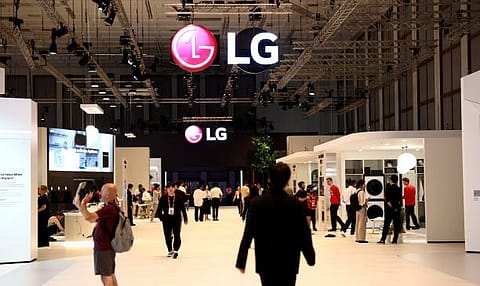After Hyundai, LG Electronics taps IPO route; promoter to sell 15% stake
In similar line with HMIL, the IPO of LG Electronics is completely an OFS of 10.18 crore shares by the South Korean promoter, LG Electronics Inc.

In recent years, India has emerged as a hotbed for initial public offerings (IPOs), with several high-profile companies tapping primary market to raise capital for development and growth. The IPO market is also seeing momentum in cross-border listing, with many foreign companies choosing to list their overseas subsidiaries in India as market resilience amid elevated uncertainty and volatility and strong listing gains attracting global companies.
In October this year, Hyundai Motor India Ltd. (HMIL), the Indian subsidiary of South Korean auto major Hyundai Motor Company, debuted on the Indian stock market after raising ₹27,870 crore via IPO route, the largest in the country’s history. The mega IPO was completely an offer for sale (OFS), where 14.2 crore shares were offloaded by Korean parent Hyundai Motor, which was subscribed 2.37 times.
Taking cues from the successful listing of HMIL, another South Korean firm LG Electronics has also decided to list its wholly-owned Indian subsidiary locally. Last week, LG Electronics India Ltd, the Indian subsidiary of South Korea’s LG Electronics Inc., filed draft papers with the Securities and Exchange Board of India (SEBI) to launch its IPO. In similar line with HMIL, the issue of LG Electronics is completely an OFS by the promoter, LG Electronics Inc, with no fresh issue component. This means the company will not receive any portion of the IPO proceeds and all capital will go to the promoters.
As per the draft red herring prospectus (DRHP), LG Electronics Inc. will sell 10.18 crore equity shares of face value ₹10 each in its Indian arm, amounting to 15% shareholding. Post-IPO, the promoter will hold 57.69 crore shares, or 85% stake in the Indian subsidiary.
The company has not disclosed the price band and total issue size, but report suggests that it looks to raise around ₹15,000 crore by listing its shares on the domestic bourses.
“The offer price per equity share will be determined on conclusion of the book building process,” the company says in its DRHP.
LG Electronics, which specialises in consumer electronics, home appliances, and mobile communications, competes with listed entities Havells, Voltas, Whirlpool, and Blue Star. It also competes against fellow Korean brand Samsung and Japan’s Sony in the highly competitive consumer appliance market in India.
Recommended Stories
For the financial year 2023-24, LG Electronics India reported a 12.35% year-on-year growth in profit to ₹1,511.1 crore, and its revenue from operations rose 7.48% cent to ₹21,352 crore. The operating profit, or EBITDA, stood at ₹2,224.87 crore with a margin of 10.42%.
For the three months ended June 30, 2024, the profit stood at ₹679.65 crore, and the revenue was ₹6,408.8 crore. Segment wise, home appliances and air solution contributed around 79% of the total revenue, while home entertainment division generated the remaining 21% of the topline.
Incorporated in 1997 as a wholly owned subsidiary of South Korean parent, LG Electronics is operating in India for the last 27 years, commanding leadership in major home appliances and consumer electronics (excluding mobile phones) in terms of volume for the six-month period ending June 30, 2024, as per the Redseer Report mentioned in the DRHP. Additionally, it has been the number one player in this industry for 13 consecutive years (CY2011 to CY2023) as per the value market share in the offline channel in India, as noted in the report.
India’s appliances and electronics market has grown at 7% in the last 5 years and this growth is expected to accelerate to 12% in the next 5 years, driven by rising disposable incomes, growing urbanisation, and increasing penetration of appliances and electronics in both urban and rural areas.
(INR CR)
As of H1 2024 (annualised), the market stands at ₹6,36,000 crore and is projected to reach ₹10.06 lakh crore by CY2028, growing at an accelerated CAGR of 12%. In terms of volume (B2C), the industry sold 500 million units across categories, which is expected to reach close to 630 million units by CY2028P at a CAGR of 6%. This growth will be fueled by rising disposable incomes, urbanisation, increased appliance penetration, government support for local manufacturing, and a shift toward premium, energy-efficient products. The expansion of organised retail and e-commerce will further drive accessibility and affordability, as per the DRHP.